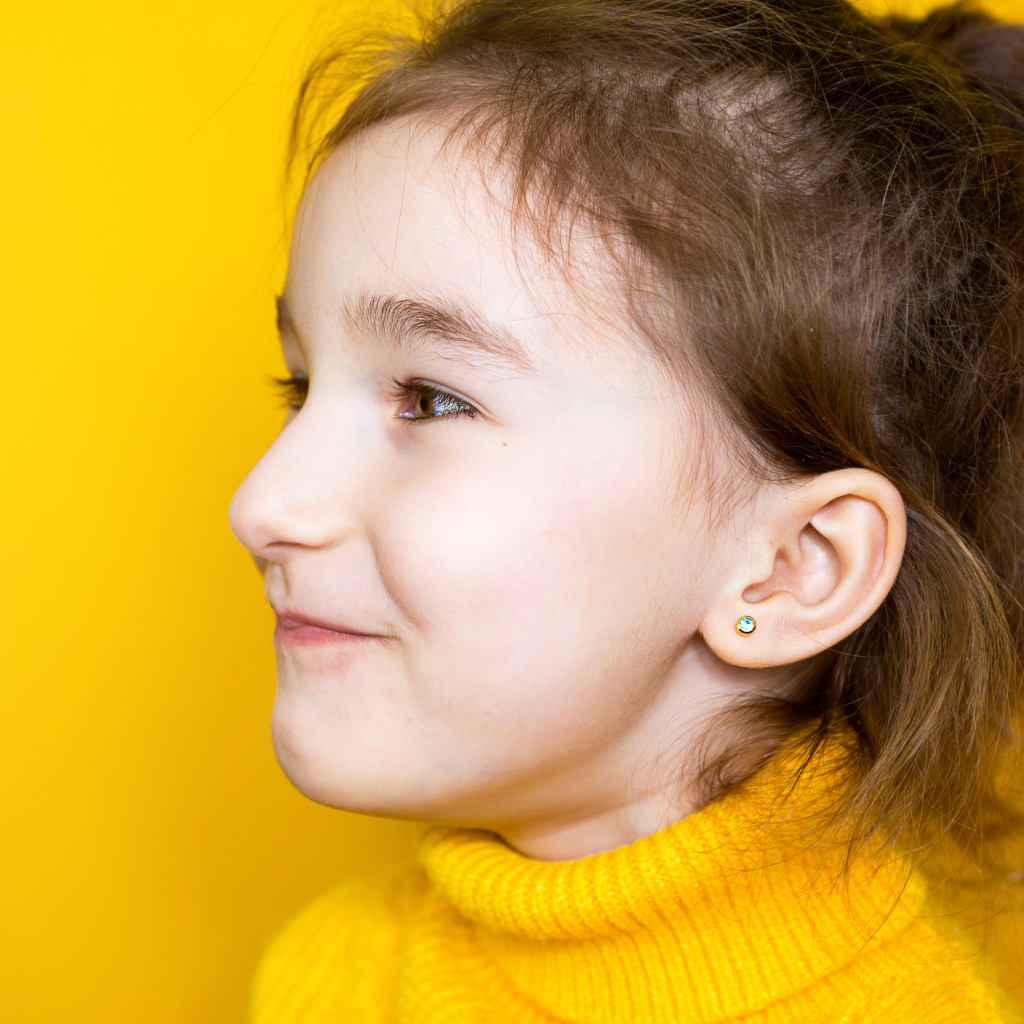
Safe Ear Piercings
For Children & Adults!
Our clinic offers safe ear piercing for children in a clean, comforting, and kid-friendly environment. Your child’s health and happiness are our top priorities, and that includes making special milestones—like their first ear piercing—a positive, memorable experience.
Unlike retail kiosks or salons, all ear piercings at our clinic are performed by trained pediatricians using sterile, hypoallergenic equipment. We follow strict safety protocols in our medical-grade facility to help minimize any risk of infection or discomfort. Whether it’s your baby’s first set of earrings or your older child’s long-awaited turn, we take the time to explain the process, calm nerves, and make the moment feel exciting instead of scary.
We provide ear piercings for children aged 3–9 months and 6 years and older, regardless of whether they are existing patients of Bee Well Pediatrics. And yes, we offer ear piercing for adults too—so you’re welcome to book your own appointment alongside your child’s!
We’re proud to offer one of the safest and most thoughtful options for pediatric ear piercing in Austin. To schedule an appointment or learn more, give us a call below.
Preparation for a smooth Piercing Recovery
Keeping your child’s new ear piercings clean and healthy is an important part of the process. Here are some easy tips to help the area heal well and prevent any issues:
Leave the starter earrings in place for at least six weeks—day and night. Taking them out too early can cause the holes to close up.
Clean hands first! Always wash your hands before touching your child’s earrings or ears.
Gently clean the area once a day with mild, fragrance-free soap and water. Afterward, rinse thoroughly to remove all the soap. Avoid getting water deep inside the ear.
Skip the harsh stuff. Avoid using hydrogen peroxide or antibacterial soaps, as they can irritate the skin while it’s healing.
Keep it moisturized. You can use a small amount of petroleum jelly (from a squeeze tube, not a jar) around the front and back of each earring. This keeps the skin moist and supports healing.
Watch for signs of infection. If the area becomes red, swollen, sore, or starts to ooze, it may be infected. If those symptoms don’t clear up quickly, it’s best to have it checked out. Raised skin may also be a sign of a type of scar called a keloid.
Read the full article on piercing care from the American Academy of Dermatology (AAD) for more information.


